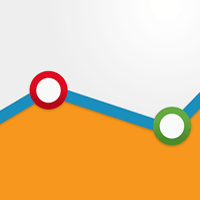What is Data Analytics

Analyzing data is the process of turning information into insights that can be used to make better decisions. It involves studying the data deeply in order to identify patterns, trends, and relationships. Using the insights gained from analytics can improve business processes, marketing campaigns, and product development.
Analytics is an influential tool that can help organizations make better decisions, improve efficiency, and increase profits. However, it is important to remember that insight into analytics is not a one-time event. It is a continuous process that should be ongoing in order to ensure that the organization makes the most of its' data.
The Importance of Data Analytics
With analytics usage, you can gain insight on a variety of topics. For example, analysts may use analytics to study customer behavior, understand how employees use company resources, or predict future trends. By understanding and analyzing data, businesses can make informed decisions that lead to improved results.
The main purpose of analytics is to help organizations make better decisions. By understanding data and trends, businesses can make more informed choices that improve outcomes.
Analytics provide insight that helps drive decision-making. Businesses can understand customer behavior, employee resource usage, and future trends by analyzing data. Businesses can improve their overall performance by making better decisions informed by analytics.

6 Ways to Use Data Analytics
Improved Decision Making
Data analytics has become increasingly important for businesses in recent years. Companies can gain valuable insights by analyzing data to help them make better decisions.
There are several ways that businesses can use data analytics to their advantage. For example, they can use it to improve their marketing strategies, better understand their customers, and make more informed decisions about their business operations.
Data analytics can also help businesses save money. Understanding where they are wasting money can allow them to better use their resources and reduce their costs.
Overall, data analytics is a powerful tool that can help businesses improve their performance and make better decisions. By using data analytics, companies can gain a competitive edge and improve their bottom line.
More Effective Marketing
One of the most common uses for data analytics is marketing. By analyzing data, businesses can better understand their customers and target their marketing efforts more effectively.
Data analytics can help businesses identify their most valuable customers and target them with specific marketing messages. Additionally, data analytics can help businesses understand which marketing channels are most effective and where they should allocate their resources.
Overall, data analytics can help businesses improve their marketing efforts and get more bang for their buck. By using data analytics, businesses can better understand their customers and make informed decisions about their marketing strategies.
Improved Customer Understanding
Another common use for data analytics is customer understanding. Businesses can better understand their customer's needs and desires by analyzing data.
Data analytics can help businesses identify trends among their customers. Additionally, data analytics can help businesses understand how their customers interact with their products and services.
Overall, data analytics can help businesses improve their understanding of their customers allowing them to gain valuable insights that can help them better serve their clientele.
Cost Savings
Data analytics can also help businesses save money. Understanding where they are wasting money can facilitate better use of resources and a reduction in costs.
For example, data analytics can help businesses identify areas where they are overspending. Businesses can then use this information to find ways to reduce their costs.
Overall, data analytics is a powerful tool that can help businesses save money. They can use the data to maximize their resources and reduce their costs.
Increased Efficiency
Data analytics can also help businesses increase their efficiency. Understanding where they are wasting time can help businesses better use their resources and improve their operations.
For example, data analytics can help businesses identify bottlenecks in their processes. Additionally, data analytics can help businesses find ways to automate their operations.
Overall, data analytics is a powerful tool that can help businesses increase efficiency. They can use data analytics to make their operations more efficient and reduce costs.
What is Data Analytics Technology?
The term "data analytics" describes a process of studying data and drawing conclusions from it. Data analytics technologies help organizations make better decisions by providing insight into their data.
There are a variety of data analytics technologies available, each with its strengths and weaknesses. Some of the most popular data analytics technologies include:
Data Warehouses:
A data warehouse is a database that stores and analyzes data. Data warehouses help organizations make better decisions by providing insight into their data.
Data Mining:
Data mining is extracting valuable information from large data sets. Data mining can find trends and patterns to help make better decisions.
Data Visualization:
Data visualization is creating visual representations of data. Data visualization can find trends and patterns that can be used to make better decisions.
Statistical Analysis:
Statistical analysis is a process of using statistical methods to analyze data. Statistical analysis can help you find trends and patterns that, when used properly, can help you to make better decisions.
Which data analytics technology is the best for your organization will depend on your specific needs. However, you can use all of these data analytics technologies to help organizations make better decisions by providing insight into their data.

5 Challenges of Data Analytics
Data analytics is a hot topic these days, with businesses of all sizes looking to make sense of their data and use it to gain insights that can help them improve their operations. However, data analytics has its challenges. Here are some of the challenges you may face when working with data:
1. Data overload:
With so much data generated today, it isn't easy to know where to start and what to focus on. The overabundance of data can lead to information overload, making it difficult to find your insights.
2. Data quality:
Not all data is created equal. Some types of data are more accurate than others, and some data may be missing or incomplete. This can make it difficult to trust the data and get reliable results.
3. Data silos:
Data often resides in different systems and is not always easy to access. This can result in data silos, making it difficult to get a holistic view of your data.
4. Lack of skills:
Data analysis requires specific skills, which can be difficult to find in-house. Businesses can be forced to rely on external consultants or service providers, which can be costly.
5. Implementation challenges:
Once you've identified the insights you want to gain from your data, you need to implement them in a way that is efficient and effective. Knowing how to implement the data can be difficult, especially if you're unfamiliar with data analytics.
Despite these challenges, data analytics can be a powerful tool for businesses of all sizes. Understanding the challenges you may face and taking steps to address them can make data analytics work for you.








